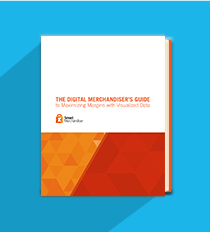
ComScore Reported that $53.3 billion was spent online during the 2014 holiday season, a 15 percent increase over the 2013 season. Black Friday 2014 experienced $1.51 billion in online sales, a 26 percent increase from the 2013 season. With unlimited retail options available to online shoppers, engaging site visitors is a difficult task. Doing so is dependent on appealing to their specific needs.
Knowing what your customers want is the quickest route to a making a sale. They may be searching for a specific color combination or looking for the latest trends. On the other hand, their preferences might be focused on novelty. Effective catalog management makes it easier for site visitors to find what they are looking for. Easy navigation makes it all the more likely that a sale will take place.
With a few catalog management tools up your sleeve, you can turn your online store into a sales magnet.
Analytics
Effective online merchandisers respond to fluctuating consumer behavior. Digital analytics enable merchandisers to identify what areas of their site are getting the most traffic. Details such as which products have the highest click rates, which pages are the most visited, and which pages have the highest bounce rates can help merchandisers decide which products to feature and which products or pages need updating.
Analytics tools in merchandising software come in handy when they integrate the visual aspects of an online store with the statistics associated with the store's performance. Visual analytics tools make it easier for site managers to make critical decisions while viewing their site from a visitor's perspective.
Visual analytics tools also help site managers perform the following tasks:
- Add or removing specific colors
- Delete colors to refresh the catalog
- Move products between categories
- Remove low-performing products
- Update default colors for each category product
Social Media Awareness
The best online merchandisers consider cultural trends when making decisions that pertain to pricing, inventory and where to position best-sellers… and worst-sellers. Keeping an eye on trends in social media helps good merchandisers iterate in real-time when product popularity undergoes changes.
But most merchandisers are too busy to check social media sites to gage for emerging trends related to their brand. To save time, great merchandisers utilize tools that integrate social media trends directly into their catalog management tool so all the information they need is in one place.
Attribute Management
Attribute management allows merchandisers to organize their catalogs by colors, types of products, materials used, keywords, and more. Creating thoughtful attribute tags makes it easier for customers to find the inventory they want and can be the difference between a sale and a bounce.
Great attribute management tools make it easy for site managers to arrange their products according to categories by adding a visual element to the tedious process. Furthermore, they employ drag-and-drop functionality to make it easy to categorize on the fly.
Digital Merchandising Tools
Digital merchandising tools allow online retailers to strategically present products while optimizing the consumer’s experience. To make the most of your time and your store, make sure you're not behind on the latest merchandising technology.
Improving profit margins is at the top of all eCommerce merchandiser’s to-do lists which is why we’ve created The Digital Merchandiser’s Guide to Maximizing Margins with Visualized Data eBook.
Download the eBook to learn more!


